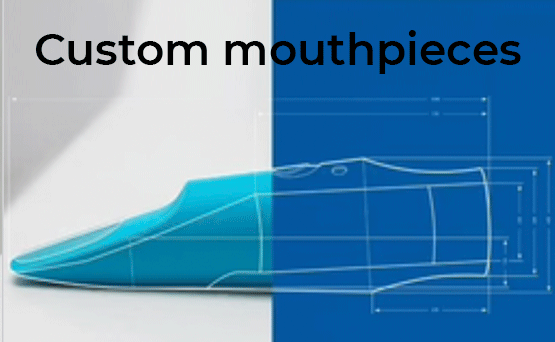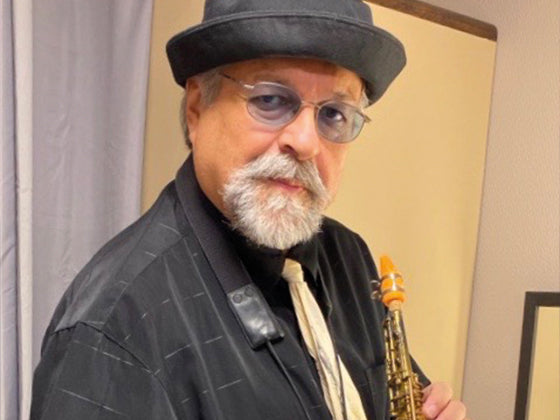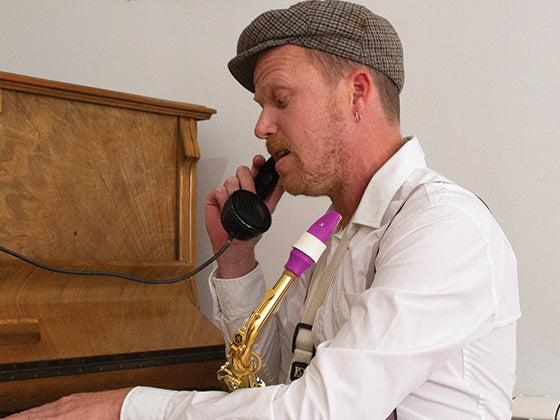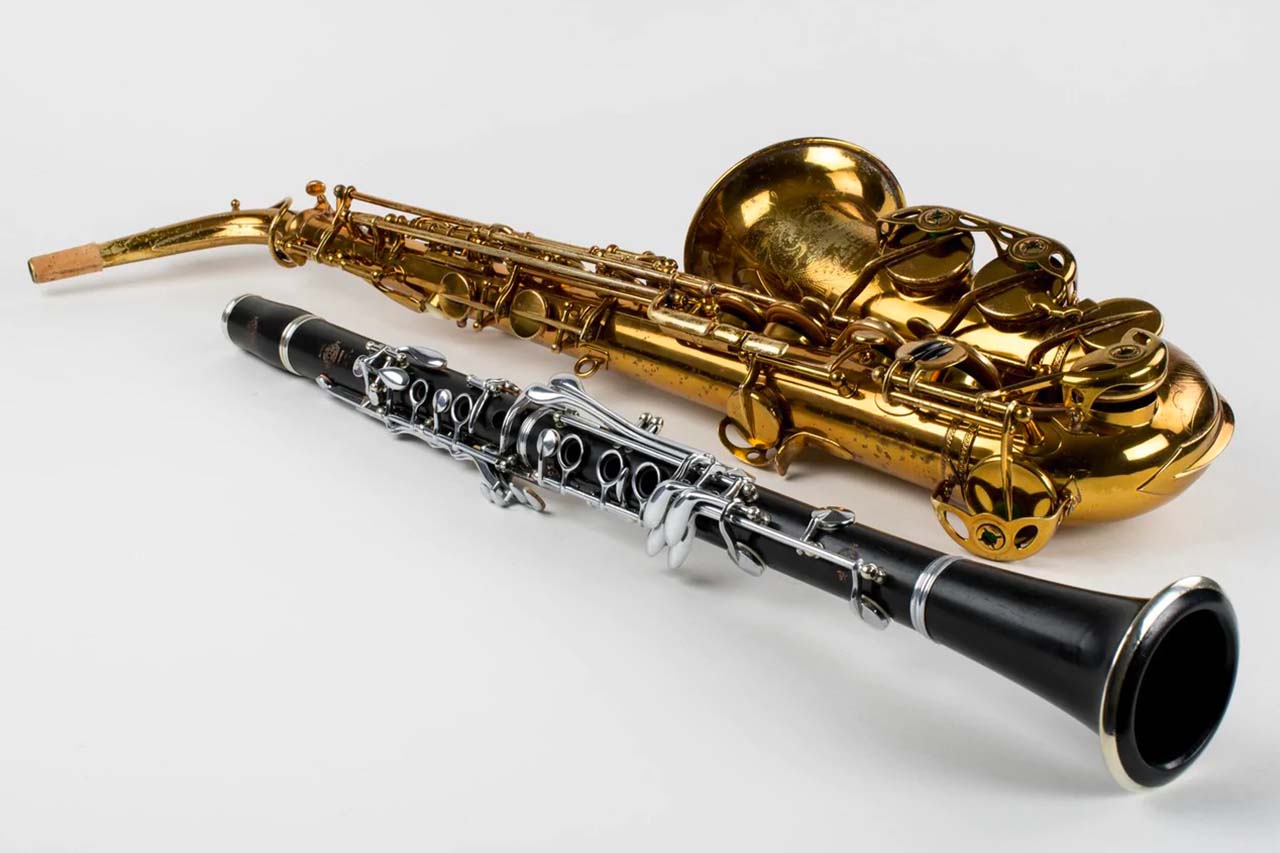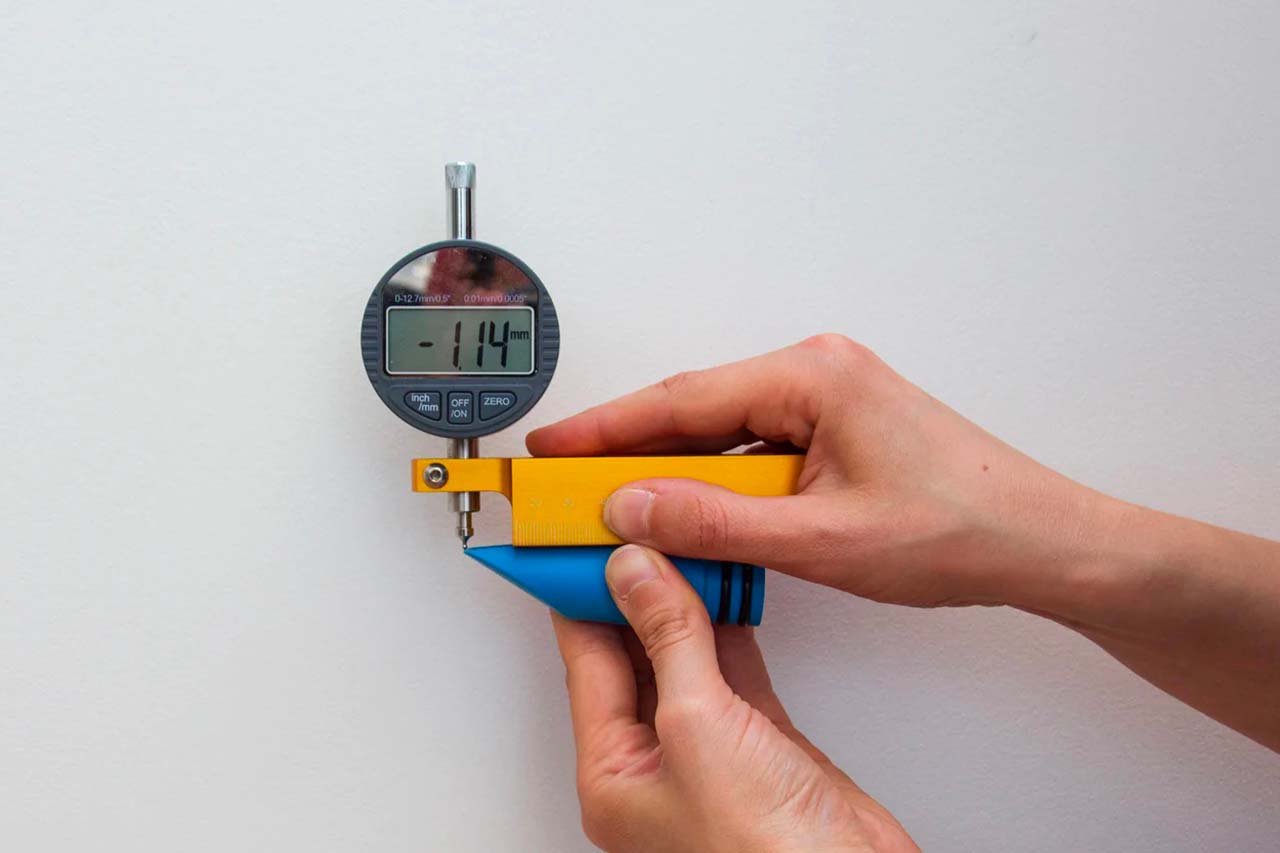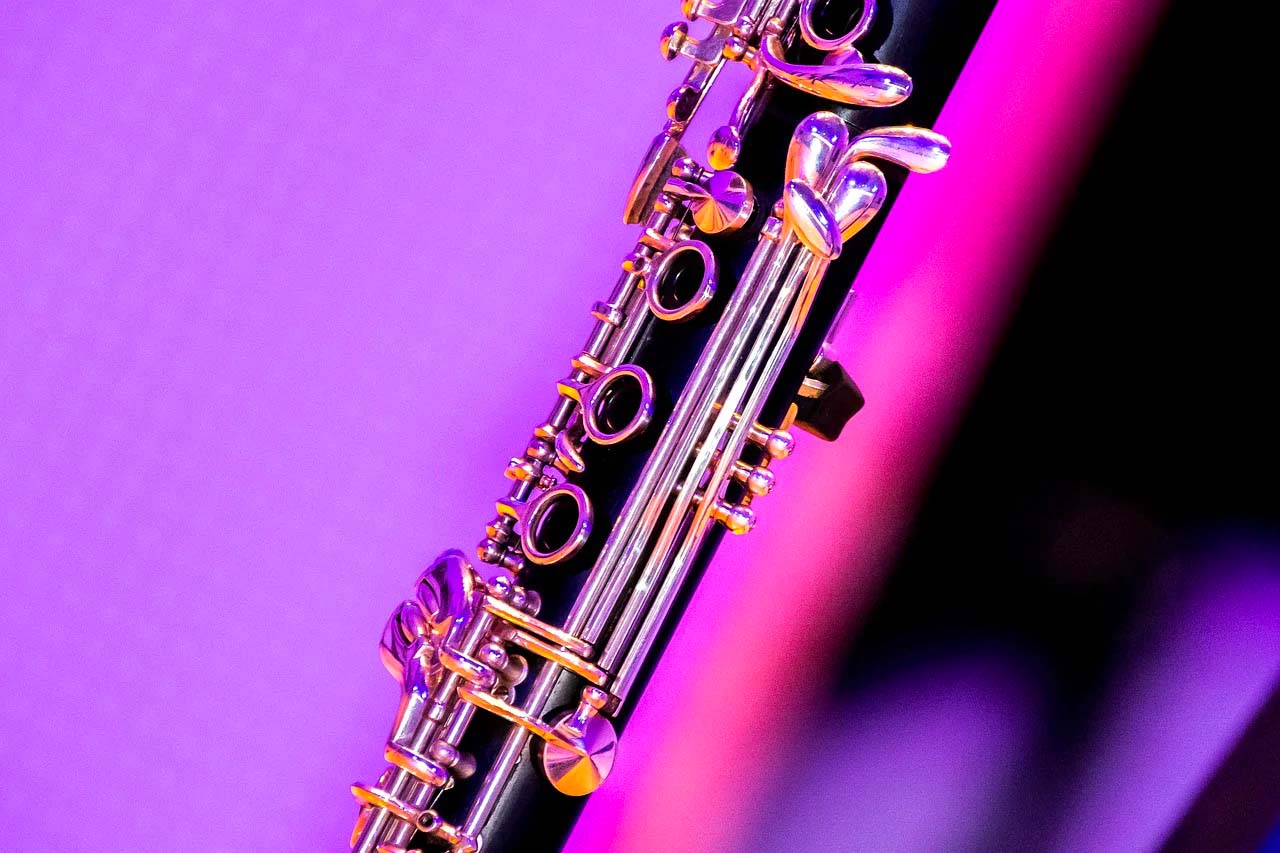When a musician changes register, all wind instruments do not have the same behavior. We know that the oboe and the saxophone go to the octave (the second register is one octave higher than the first register) and that the clarinet goes to the twelfth (the second register is one octave and one fifth higher than the first register). But why?
Note : this article is about instruments «closed» by the musician’s mouth. Therefore what is stated here is not applicable to flute-like instruments which are «open» at both ends.
Our best friend: input impedance
To answer this question, we can have a look at the input impedance of these instruments. Input impedance peaks provide information about the frequency of the playable notes with any fingering. Let’s start with the input impedance of an oboe with Bb3 fingering:

The first impedance peak has a frequency f1 = 234 Hz. This frequency is very close to that of the Bb3 (233Hz). Without a change in register, the musician produces a sound related to this first peak. When they have changed register, the musician produces a sound coressponding to the following peak. The frequency of the second peak here is f2= 466 Hz. An octave is characterized by a doubling of the frequency. So the frequency of a Bb4 is twice that of a Bb3. This is what we obtain here, with f2= 466 Hz = 2 x 233 Hz = 2 x f1.
It is the exact same for the saxophone’s input impedance, playing A#3:

The first two peaks are situated around 233 Hz and 466 Hz.
Now, let’s have a look at the input impedance of a simplified clarinet (a cylindrical tube, without holes, equipped with a clarinet mouthpiece). This instrument was made to produce a C#2 (70Hz) :

This time, f1= 71Hz and f2= 213 Hz.
When the clarinet goes to the twelfth, the frequency of the sound produced is tripled. In our case, we then go from a C#2 (70 Hz) to a G#3 (210 Hz): f2= 213 Hz = 3 x 71 Hz = 3 x f1.
The input impedance of these instruments explains the behavior of the oboe and clarinet when a register change occurs. But then we come to another question: why do they behave differently?
A question of shape
These differences come from the inner structure of the instruments: the oboe and saxophone have a conical shape, while the clarinet has a cylindrical shape!
The clarinet is considered as a closed-open cylindrical tube. It is open at the bell, and “closed” at the reed, where the musician blows. The instrument’s resonances, corresponding to the impedance peaks, can be represented by the shape of the pressure in the tube.
In a tube, the “closed” end has a maximum of pressure, called an antinode, while the open end has a null pressure, called a node (the reality is that the overpressure added to the atmospheric pressure is null at the open end of the instrument, as the pressure is the same as outside).
The picture below shows the pressure in the tube for its first resonance (ie. first impedance peak and first note) :

The pressure is null when the red curves cross. We then obtain a pressure antinode at the input and a pressure node at the output. The picture below shows the pressure for the second resonance (ie first register change):

For the second resonance, there are two pressure nodes (output of the instrument and at 1/3 of its length) and two pressure antinodes (input of the instrument and at 2/3 of its length).
Such a result is obtained because in a cylindrical tube waves propagate as plane waves (i.e. their amplitude is constant throughout the tube, there is no energy loss). You can see that in this configuration, the wavelength of the produced sound is 3 times smaller than for the first resonance (the distance between the input of the instrument and the first pressure node is 3 times smaller).
Consequently the frequency of the produced sound is 3 times higher. This matches with the input impedance, as well as with the effect on the sound produced by the instrument (the clarinet goes to the twelfth).
Extending this result to the other resonances, we may see that they are the odd harmonics of the first one (f2= 3 x f1, f3= 5 x f1, etc… so fn= (2n-1) x f1).
Inside a cone, as for the saxophone and the oboe, waves propagate as if they were in a section of a sphere.
Imagine clapping your hands. In the air, the sound propagates much like a sphere from the sound source (the hands). In this case, the acoustic energy (therefore the amplitude of the pressure), considered on a constant surface, is reduced as we move away from the source (the total energy is considered constant, but as the sphere grows when we move away, the local energy is reduced).
The same phenomenon happens in a conical wind instrument: the closer to the bell of the instrument, the lower the pressure amplitude. The instrument’s first resonance then has a similar shape as for the cylindrical tube, with the losses added (not easy to see on the picture below):

Again, there is an antinode at the input and a node at the output. The effect of the losses is bigger on the next resonance:

Similar to the cylindrical tube, there are two antinodes and two nodes. Due to the losses, the second antinode is lower than the first.
Another consequence can be seen: the first node is not in the same place. For the cylindrical tube, it was at 1/3 of the tube’s length, here it is at half the cone’s length. The obtained wavelength for the second resonance is therefore half that of the first resonance, and its related frequency is doubled: an octave difference!
This time, all the harmonics may be obtained with the other resonances (f2= 2 x f1, f3= 3 x f1, etc… so fn= n x f1).
Note: defining a clarinet as a cylinder and a saxophone or oboe as a cone are serious simplifications from reality (mouthpieces are not considered, it would be impossible to blow in a complete cone, etc.), but these simplifications are sufficient to explain the physical phenomena that we describe here.
Conclusion
Now we know why the clarinet, the saxophone and the oboe have a different behavior : because of their shape.
Closed-open cylindrical wind instruments go to the twelfth, while closed-open conical wind instruments go to the octave.
Historically, conical instruments were preferred to cylindrical instruments, as they need less tone holes (and less keys) to play every note of a register before changing to the next one.
A register is an octave for a cone, and a twelfth (an octave plus a fifth) for the cylinder.
Special thanks to Thibaut Meurisse, former colleague of Pauline's during their respective PhD research at Ircam, for writing this article!

